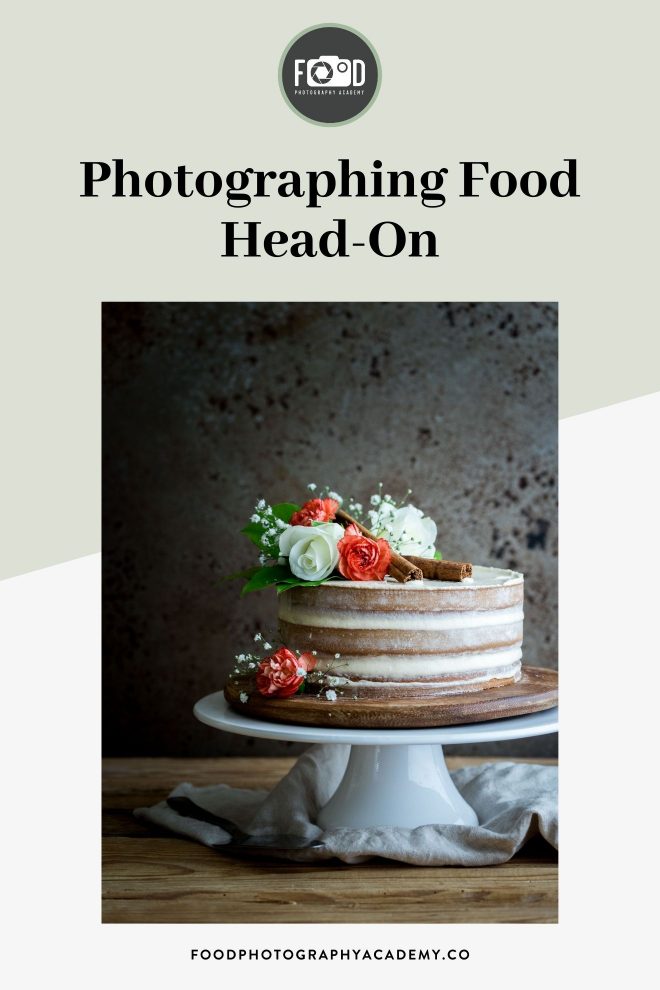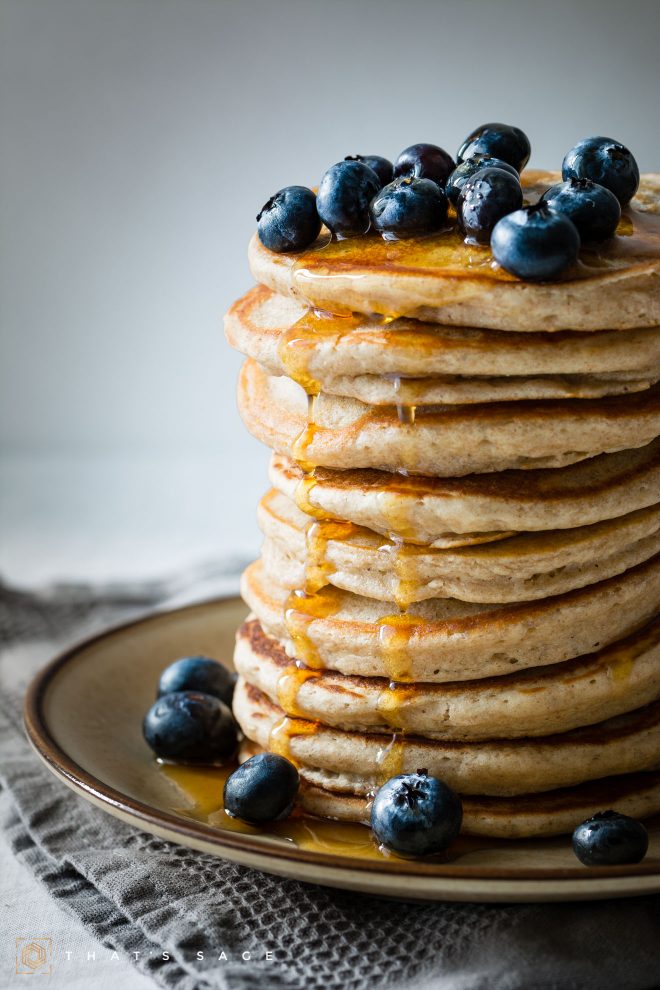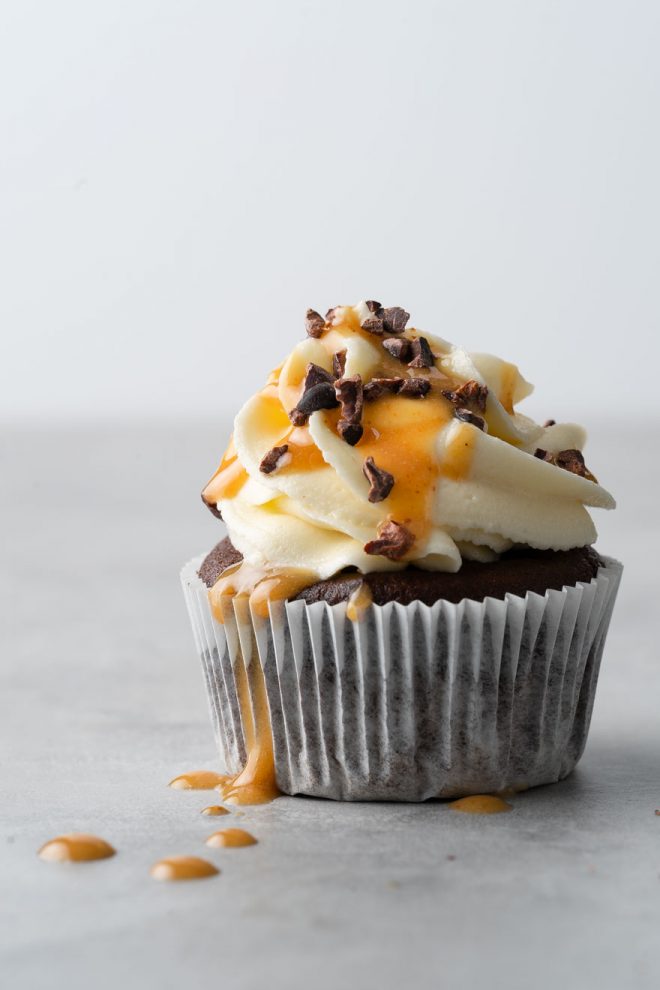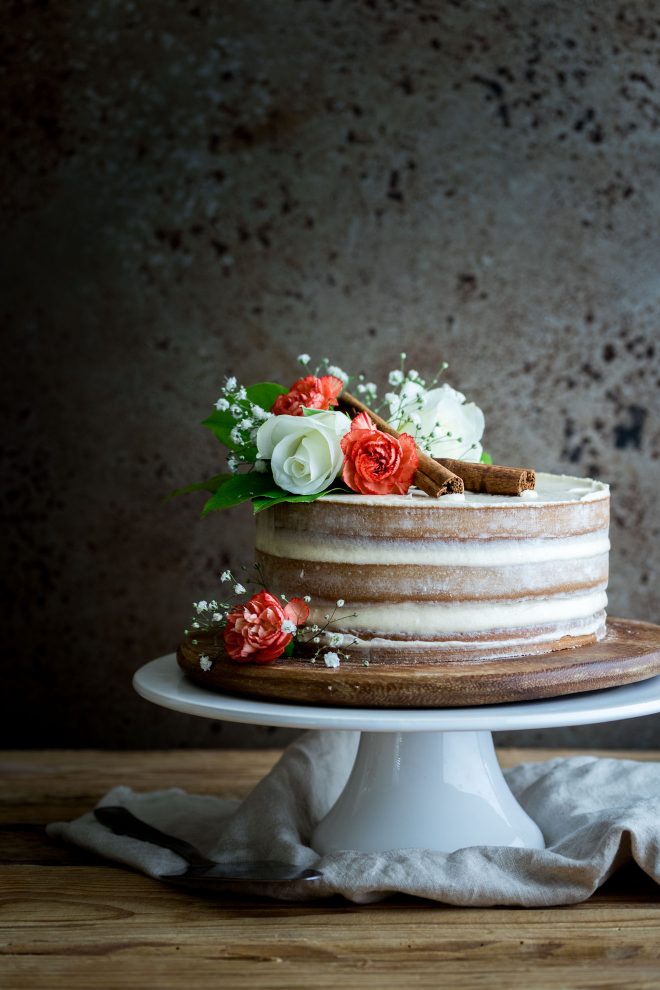Photographing food head-on can be a great way of creating bold and graphic shots where the dish is instantly recognizable. Food that’s photographed directly from the front often becomes iconic and easy to understand at a glance. This makes it great for menu shoots and can be a nice way of switching up the perspective when creating a food photography narrative over a series of photos.

Photographing food head-on isn’t a technique that will work for just any subject though. And it comes with its own unique set of challenges and considerations. When it works though, it really works. Looking to shoot the definitive sandwich, burger, or pancake stack? Here’s how.
Subject
The first issue to consider here is your subject. Certain dishes lend themselves extremely well to being photographed head-on, while others will become almost invisible from this angle. So it’s all a question of choosing the right subject for the approach.
For example, a sandwich photographed from overhead will look the same whether it contains a single leaf of wilted lettuce or is stacked to the ceiling with multiple layers of sumptuous fillings.
But photograph a club sandwich from head-on, and you’ll show it in all its multideckered glory.
Similarly, the high-rise profile of a cocktail or long-drink served in a highball glass can look great shot directly from the front. Other subjects that could work well are burgers, pancake stacks, certain cakes and desserts, and any other vertically impressive dishes.

With that said, photographing front-on is not recommended for dishes that come in a bowl, clearly all you will see here is the bowl itself, with a little of its contents peeking over the top. These kinds of dishes are better suited to a 90° flatlay or a more 45° profile.
For the same reasons, shooting head-on is never going to be a good solution for very low-rise dishes, such as a quiche or a tart for instance, as almost nothing of the food itself will be visible to the camera.
Angle
If a frontal point of view does look like it might suite your subject, bear in mind that you don’t need to take the words “head-on” too literally. For sure, sometimes a totally squared-off image, shot from bang in front of the subject, and at exactly the same height, can look great.
But before you lock down that tripod, be sure to try some slight variations on this position first. Depending on the subject, even just a few extra degrees in height might be all it takes to show a little of the top of the dish; adding greater interest to the image or making it more informative for the viewer.

In this cupcake image, my camera is actually a little higher than my scene, pointing slightly downwards at the cupcake. It’s subtle but an effective trick to help this cupcake look it’s best!
Focal Length
A longer lens will foreshorten perspective. This will have the effect of flattening your dish slightly, making it appear more graphic. And if you are shooting totally square-on, it will also help to guarantee nice straight vertical and horizontal lines, without any convergence.
In contrast, when shooting food head-on, you’ll generally want to avoid using wide angle lenses. Wide lenses can be used to good effect from this angle. But as they will distort perspective, shots using wide angle lenses tend to work much better with top down shots, or head on shots of much wider scenes (like a full dining table, for example).

This image was taken with a 96mm equivalent length (60mm on a crop sensor) lens. It allows the cake to look very straight and free of any lens distortion.
Background
When photographing from a low angle, it’s obvious that the shooting surface under the food becomes much less important than it would be if the camera were above the subject. And where overhead shots are all about the surface, and usually don’t need a background at all, suddenly it’s the backdrop that becomes super important when photographing food head-on.
In fact, when shooting from the front, the background might be the single most important storytelling element in your photograph after the food itself.
And this brings us to another important matter: when shooting a dish head-on, you’ll need to pay particular attention to the “horizon line” where the shooting surface and background meet behind the dish.
Notice the position of this line both in relation to your subject and in terms of the overall composition of the image. Either raising or lowering the camera, or altering the relative distance between camera, subject, and background, can radically alter the look of your shot by placing the subject higher or lower against the backdrop.
Foreground
The potential of props to add extra visual and narrative interest to a head-on food photograph should not be underestimated. In particular, careful placement of props in the foreground can be a great way of drawing the eye into the photo and up towards the hero.
When putting other objects in the foreground, it’s important that you give careful consideration to depth-of-field. Perhaps you want foreground objects to be a soft blur, just adding a touch of atmosphere and visual interest as you shoot through them? Here you should select a wide lens aperture for a shallow depth-of-field. Or maybe you would prefer these props to be clearly recognizable, so as to add an evident narrative element to the image. If that’s the case, you’ll need to stop down your aperture for a much deeper depth-of-field.
To learn more about aperture and depth of field, take our free 5 day e-course, Manual Mode Essentials.
Final Thoughts
Photographing food head-on certainly isn’t a one-size-fits-all solution for every shoot. And it really won’t work at all for some dishes. Having said that though, reaching for the overhead arm every time you take a photograph can get pretty boring. And in any case, not every subject will look its best when photographed as a flatlay.
Front-on food shots are an important part of any professional food photographer’s repertoire, and it’s a great technique than can really bring out the best in certain subjects. So next time you’re setting up a shot, consider tackling it head-on for a change!

Great post. I would have seen examples of good and bad background placement, as you said it was the single most important storytelling element. Thanks!
It’s amazing the impact it has Marci!
Great post Lauren. I struggle most with getting the composition right in head on shots , particularly when I try to include many supporting props to try to tell the story. It’s difficult to know how to place everything. Storytelling in flat lays is much easier, but they do get boring.